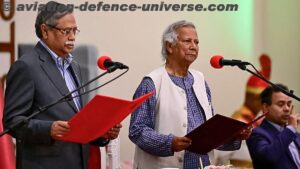
New Delhi. 28 December 2018. Today the Department of Defense provided to the Congress the semi-annual report “Enhancing Security and Stability in Afghanistan” covering events during the period from June 1 to November 30, 2018. The report was submitted in accordance with requirements in Section 1225 of the Fiscal 2015 National Defense Authorization Act (NDAA) as amended by Sections 1231 and 1531 of the Fiscal 2016 and Fiscal 2017 NDAA.
The principle goal of the South Asia Strategy is to conclude the war in Afghanistan on terms favorable to Afghanistan and the United States. During this reporting period, the United States and its partners used military force to drive the Taliban towards a durable and inclusive political settlement. There have been some notable developments – the June Eid al-Fitr ceasefire and the support for peace from the broader Islamic community – which threatened the legitimacy of the Taliban.
The Special Representative for Afghanistan Reconciliation (SRAR), Ambassador Zalmay Khalilizad, has reinforced U.S. diplomatic engagements with Afghans, neighboring states and interested parties in the broader region. Increased military pressure on the Taliban, international calls for peace, and the new SRAR’s engagements appear to be driving the Taliban to negotiations.
The introduction of additional advisors and enablers in 2018 stabilized the situation in Afghanistan, slowing the momentum of a Taliban march that had capitalized on U.S. drawdowns between 2011 and 2016. The Afghan National Defense and Security Forces (ANDSF) remain in control of most of Afghanistan’s population centers and all of the provincial capitals, while the Taliban control large portions of Afghanistan’s rural areas, and continue to attack poorly defended government checkpoints and rural district centers.
The reinforcement and realignment of U.S. and coalition forces and authorities under the South Asia Strategy have significantly increased pressure on the Taliban. Continued DOD partnership with the Afghan Special Security Forces (ASSF) has produced an extremely lethal and agile offensive force. Enhanced efforts to train, advise and assist (TAA) the ANDSF, from strategic to tactical levels, including the employment of the Army’s 1st Security Force Assistance Brigade (SFAB) improved Afghan offensive capabilities.
NATO allies and partners remain committed to Afghanistan’s long-term security and stability. At the July 2018 NATO Summit in Brussels, allies and partners reaffirmed their commitment to the Resolute Support (RS) TAA mission and agreed to extend financial sustainment of the ANDSF through 2024. Furthermore, RS welcomed Qatar and the United Arab Emirates as new operational partners, increasing the coalition from 39 to 41 allies and partners and providing evidence that our partners and allies know that our strategy is working.
Afghanistan held parliamentary elections in late October, and did so with minimal U.S. military support. Although the elections were not without violence, ANDSF preparation to secure polling stations resulted in an election that was less violent than any election conducted over the past ten years. The parliamentary elections demonstrated the significant growth and development of Afghanistan’s institutional and security capabilities, and help set the stage for presidential elections in 2019.
























































































































